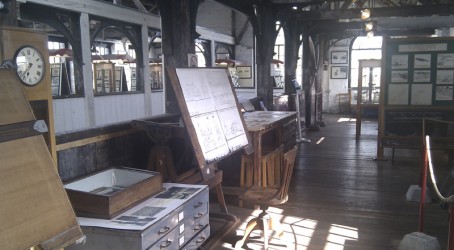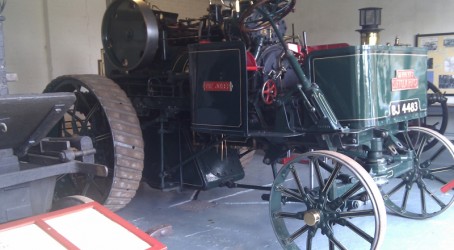Museums
Suffolk is associated with rural landscapes, medieval towns and picturesque villages. One such town, Leiston, two miles from the North Sea coast, is home to the Long Shop Museum.
The museum occupies a part of the former Leiston Works site, established in 1778 by Richard Garrett & Sons. The works dominated the town for almost 200 years. The Garretts provided employment for the local population, brought the railway to Leiston and provided the town with water, gas and a fire brigade.
Garrett & Sons also built the first horse-powered threshing machine in 1806. Around 1840 the company conceived the idea of using steam power for agricultural purposes and after numerous experiments produced steam threshing machinery.
From 1840 onwards the company enjoyed one of the largest export trades in steam engines and threshers in the world. The firm also made steam tractors, trolleybuses and a variety of machined metal products, including munitions during both world wars.
The works closed its doors in 1980 but the award-winning Long Shop Museum, named after a grade II*-listed building, lives on at the historic core of the site to tell the tale of Leiston’s industrial heritage.
The site is also home to a listed water tower built in the 1850s to provide water for the chemical treatments involved in the steam boiler manufacturing process. At its centre lies a large well.
The Richard Garrett Hall, originally a turnery, was restored in 1985 and now houses temporary exhibitions. There’s plenty to see here, with a multitude of artefacts produced at the works on show, including gates, railings, lamp-posts, and the Garrett steam pipe oven.
Adjoining the hall is the star attraction, the Long Shop. Built in the 1850s for the assembly of portable steam engines, it is one of the earliest examples of a workshop designed for mass-production.

Princess Marina, an elegant steam tractor, graces the ground floor of this formidable building. Upstairs the gallery shows off hundreds of intricate cast-iron fireplace surrounds and trade tools. Here visitors will also find a fascinating display dedicated to the Yoxford Boys, a US air-combat fighter group stationed at RAF Leiston during World War Two.
The History of Steam exhibition looks somewhat flat and old-fashioned but goes to great lengths to illustrate the topic, coming up-to-date with the development of nuclear power stations.
Fortunately the museum openly recognises the need to improve its more tired displays and is planning to bring in new, professionally designed exhibits.
Suffolk Punch, the sole survivor of a series of eight engines built to plough six furrows at once, resides in the Loggia building, along with a few early fire engines.

Despite the lack of interactive displays and modern exhibits, the museum stands out as a charming, informative place which is particularly dedicated to the educational needs of its younger visitors.
School children from all over East Anglia come to the museum to step back in time to 1871 and become an apprentice for the day. They get to meet the Garrett family, attend a union meeting and partake in an exciting fire drill.
5 things to see
- Sirapite: this rare steam machine was the works shunting engine for many years.
- Suffolk Punch: distinctive example of a Garrett steam tractor, built in 1919.
- Victorian water tower and well: restored in 2001, the well is said to be the deepest in Suffolk.
- Leiston airfield displays: wonderful photographs and memorabilia tell the story of the Yoxford Boys.
- Richard Garrett Hall: current exhibition holds interesting objects including a seed drill.
Don't miss Sirapite in steam!
Sirapite, part traction engine and part locomotive, was built in 1906 and purchased by Richard Garrett & Sons in 1929. It was brought to Leiston to replace the horses that were used to manoeuvre trucks carrying goods between the works and the train station. There are opportunities throughout the year for visitors to see Sirapite in steam. This year’s final fling should take place on 24 October. This date may change so check before you travel.
- The Long Shop Museum is open to the public until 31 October. Open all year for group and school visits. Admission £5. See www.longshopmuseum.co.uk.